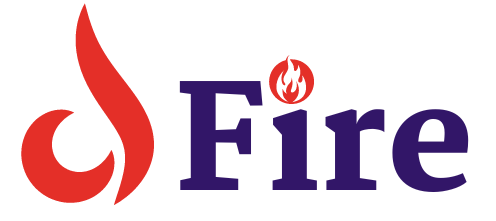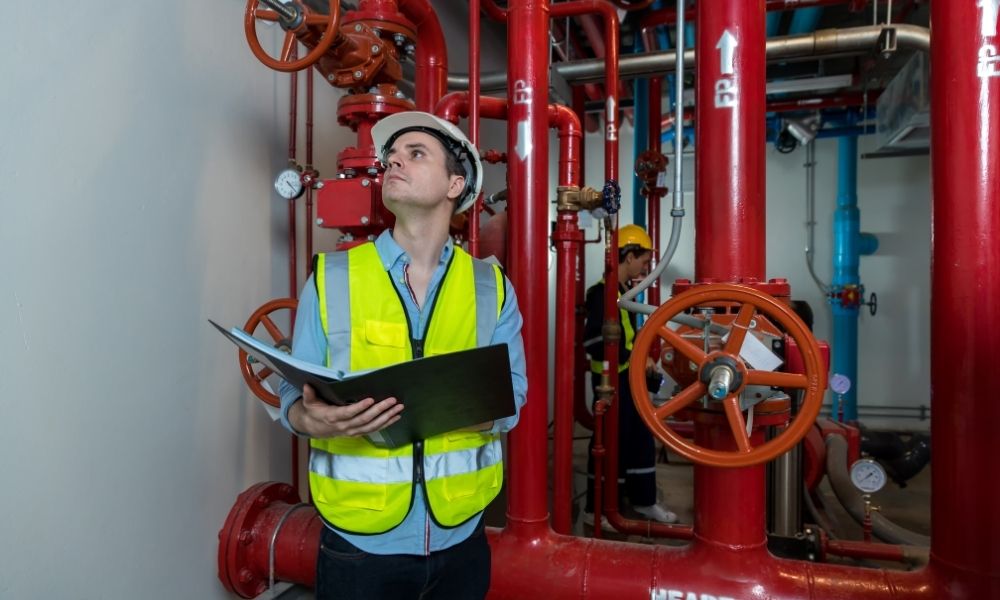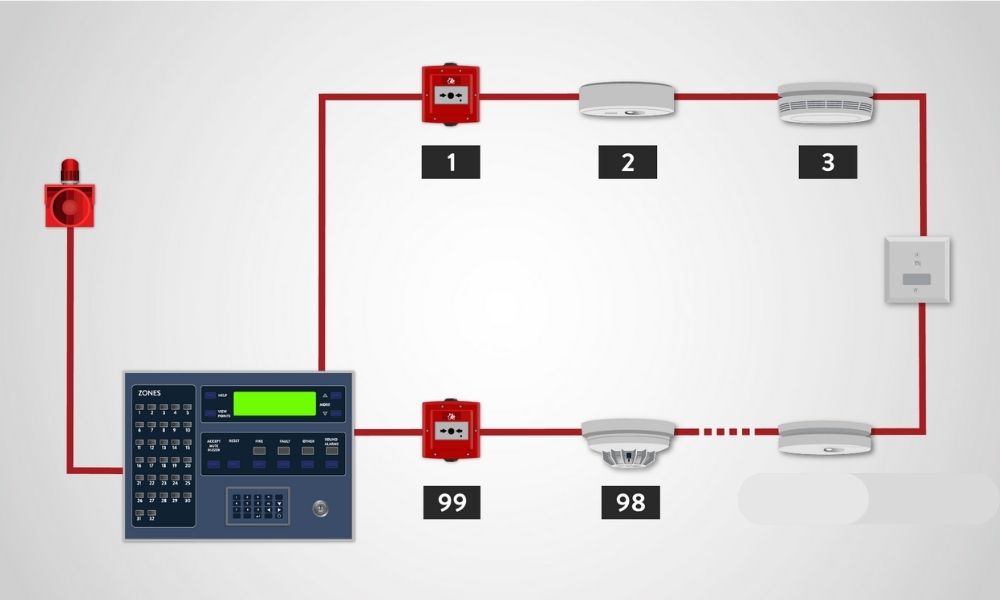Central fire protection is an essential aspect of building safety that involves the installation and maintenance of fire suppression systems. These systems are designed to detect and extinguish fires in their early stages, protecting both people and property.
Central fire protection systems can include fire alarms, sprinkler systems, and other specialized equipment that work together to provide comprehensive fire protection.
One of the primary benefits of central fire protection is the ability to quickly detect and respond to fires. With advanced sensors and monitoring equipment, fire suppression systems can detect the presence of smoke or flames and immediately alert occupants and emergency responders. This early warning can help prevent injuries and minimize property damage.
Another advantage of central fire protection is the peace of mind it provides to building owners and occupants. By investing in high-quality fire suppression systems, building owners can demonstrate their commitment to safety and protect their assets from potential fire damage. Overall, central fire protection is an essential aspect of building safety that should not be overlooked.
Essentials of Central Fire Protection
Central fire protection is a comprehensive system that helps protect buildings and people from fire hazards. It includes various components, such as fire detection systems, fire suppression systems, and fire alarm systems. In this section, we will discuss the fundamentals of central fire protection.
Fire Detection Systems
Fire detection systems are designed to detect the presence of fire and alert occupants of a building. These systems use various technologies, including smoke detectors, heat detectors, and flame detectors. Smoke detectors are the most common type of fire detection system and are used in most buildings. They detect smoke particles in the air and sound an alarm when smoke is detected.
Heat detectors are used in areas where smoke detectors may not be appropriate, such as kitchens or garages. They detect changes in temperature and sound an alarm when the temperature reaches a certain threshold. Flame detectors are used in areas where fires may occur quickly, such as chemical plants. They detect the presence of flames and sound an alarm when flames are detected.
Fire Suppression Systems
Fire suppression systems are designed to extinguish fires or control them until the fire department arrives. These systems use various technologies, including sprinkler systems, foam systems, and gas systems. Sprinkler systems are the most common type of fire suppression system and are used in most buildings. They spray water on the fire and help control its spread.
Foam systems are used in areas where water may not be appropriate, such as areas with flammable liquids. They spray foam on the fire and help extinguish it. Gas systems are used in areas where water or foam may damage equipment or property. They release gas into the area to suppress the fire.
Fire Alarm Systems
Fire alarm systems are designed to alert occupants of a building to a fire. These systems use various technologies, including horns, strobes, and voice alarms. Horns and strobes are the most common types of fire alarm systems and are used in most buildings. They sound an alarm and flash lights when a fire is detected. Voice alarms are used in areas where occupants may not be able to hear horns or strobes, such as areas with loud machinery. They use pre-recorded messages to alert occupants to a fire.
Automatic Sprinkler Systems: These are among the most effective fire suppression systems. Sprinklers are activated automatically by heat, releasing water to control or extinguish the fire. They are strategically placed throughout a building to provide comprehensive coverage.
Fire Extinguishers: Portable fire extinguishers are essential for immediate response to small fires. They should be placed at accessible locations throughout the building and regularly inspected and maintained.
In conclusion, central fire protection is an essential component of building safety. Fire detection systems, fire suppression systems, and fire alarm systems work together to help protect buildings and people from fire hazards. By understanding the fundamentals of central fire protection, building owners and occupants can take steps to ensure their safety.
Central Fire Protection Equipment
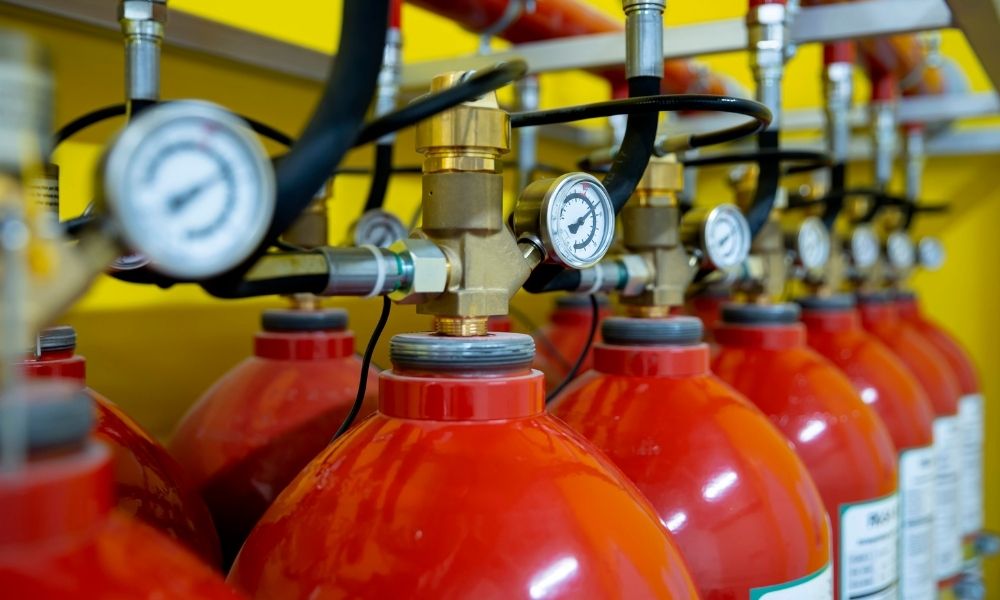
Fire Extinguishers
Fire extinguishers are an essential component of any fire protection system. They are portable devices that can be used to control small fires before they become uncontrollable. Central fire protection systems typically include fire extinguishers that are strategically placed throughout the building. Fire extinguishers come in different types, including water, foam, dry chemical, and carbon dioxide. Each type is designed to extinguish specific types of fires.
Sprinkler Systems
Sprinkler systems are automatic fire suppression systems that are activated by heat. They are designed to control or extinguish fires before they can spread. Central fire protection systems typically include sprinkler systems that are installed throughout the building. Sprinkler systems are highly effective in controlling fires and can significantly reduce property damage and loss of life.
Fire Hydrants
Fire hydrants are an essential component of any fire protection system. They are typically located on the street or near the building and provide a ready source of water for firefighters to use in extinguishing fires. Central fire protection systems typically include fire hydrants that are installed near the building. Fire hydrants are critical in providing firefighters with the necessary resources to control and extinguish fires.
Emergency Lighting and Exit Signs
Emergency lighting ensures that occupants can safely evacuate during a fire emergency, even in low visibility conditions caused by smoke or darkness. Exit signs provide clear guidance to exits and evacuation routes. These systems are typically battery-powered or connected to emergency power sources.
Fire Doors and Fire-Resistant Materials
Fire doors are designed to prevent the spread of fire and smoke between compartments within a building. They are equipped with fire-resistant materials and self-closing mechanisms to maintain their integrity during a fire. Fire-resistant materials are used in construction to slow down the progress of fire and provide occupants with more time to evacuate.
Smoke Control Systems
Smoke control systems help manage smoke in the event of a fire, improving visibility for occupants and facilitating their safe evacuation. These systems may include smoke exhaust fans, pressurization systems, and smoke curtains to control the movement of smoke within the building.
Fire Pump Systems
Fire pump systems are responsible for providing adequate water pressure to sprinkler systems and other fire protection equipment. They ensure that water can be delivered effectively to suppress fires, even at high-rise buildings or in areas with low water pressure.
Fire Detection and Alarm Monitoring Systems
These systems continuously monitor the status of fire detection and alarm devices throughout the building. They provide real-time alerts to building management or monitoring services in the event of a fire emergency, enabling prompt response and coordination of evacuation procedures.
Fire Safety Signage and Communication Systems
Clear and visible signage, along with communication systems such as intercoms or public address systems, are essential for communicating fire safety information and instructions to occupants during an emergency.
Overall, central fire protection equipment is an essential component of any fire protection system. Fire extinguishers, sprinkler systems, and fire hydrants are all critical components that work together to protect property and save lives in the event of a fire.
Installation and Maintenance of Central Fire Protection Systems
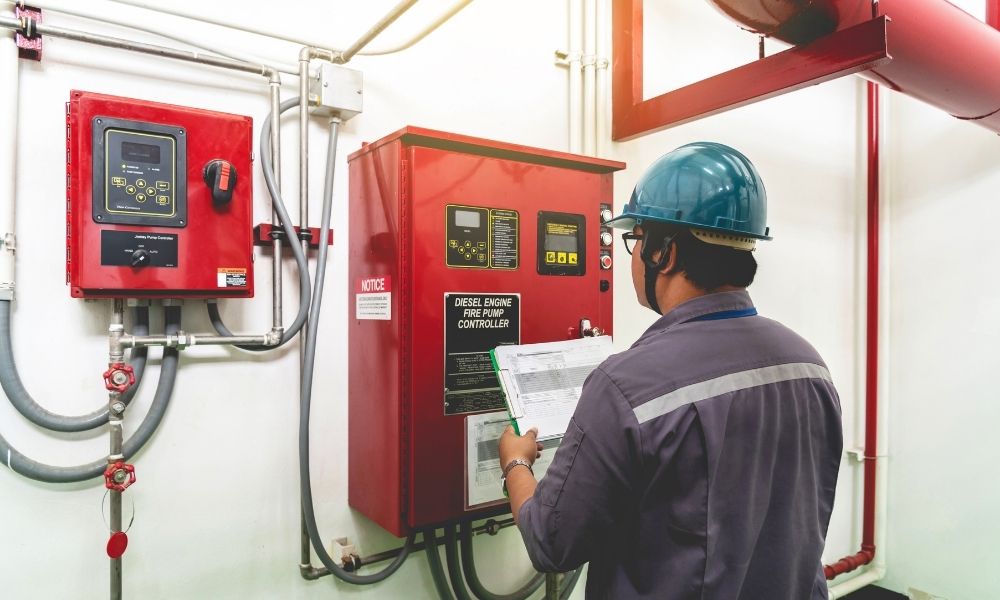
System Installation Procedures
Central fire protection systems are complex and require professional installation to ensure proper operation. The installation process involves designing the system to meet the specific needs of the building, selecting the appropriate equipment, and installing it in compliance with local codes and regulations. The installation process includes several steps, including planning, design, installation, and testing.
During the planning phase, the fire protection system is designed to meet the building’s specific needs. The design phase involves selecting the appropriate equipment, such as fire sprinklers, alarms, and extinguishers, and placing them in the optimal locations to ensure maximum coverage. The installation phase involves physically installing the equipment, connecting it to the main control panel, and testing it to ensure proper operation.
Regular Maintenance Schedules
Regular maintenance is essential to ensure that the fire protection system is functioning correctly and is ready to respond in case of an emergency. Maintenance schedules should be established at the time of installation and should include regular inspections, testing, and repairs as needed.
Inspection and testing should be performed by qualified professionals to ensure that the system is functioning correctly. During inspections, the system’s components are checked to ensure they are in good condition and free from damage. Testing involves activating the system to ensure that it functions correctly and that all components are working as intended.
Inspection and Testing
Inspection and testing are critical components of maintaining a central fire protection system. Regular inspections and testing ensure that the system is functioning correctly and can respond in case of an emergency.
During inspections, the system’s components are checked to ensure they are in good condition and free from damage. Testing involves activating the system to ensure that it functions correctly and that all components are working as intended. Any issues identified during inspections or testing should be addressed promptly to ensure the system remains in optimal condition.
In conclusion, proper installation and maintenance of a central fire protection system are essential to ensure that it is functioning correctly and can respond in case of an emergency. Regular inspections, testing, and repairs as needed should be performed by qualified professionals to ensure the system remains in optimal condition.
Central fire protection systems work by employing a combination of detection, suppression, and alarm systems to prevent, detect, and manage fires within a building or facility. Here’s how they typically function:
Fire Detection
Central fire protection systems begin with the detection of a fire or the conditions that indicate a fire might be imminent. This can be achieved through various types of sensors, including smoke detectors, heat detectors, flame detectors, and gas detectors. These sensors are strategically placed throughout the building and are designed to detect signs of fire or abnormal conditions such as smoke or heat.
Alarm Notification
Once a fire is detected, the central fire alarm system activates audible and visual alarms to alert occupants and notify emergency responders. Modern systems may also integrate with other building systems, such as HVAC and access control, to automatically initiate actions like shutting down air handling units or unlocking doors to facilitate evacuation.
Suppression Systems Activation
Simultaneously or shortly after the alarm notification, suppression systems may be activated to control or extinguish the fire. Automatic sprinkler systems, for example, are triggered by heat, releasing water to suppress the fire. Other suppression systems, such as gas-based or foam systems, may be activated manually or automatically depending on the type of fire and the specific requirements of the building.
Emergency Response
Upon receiving the alarm, occupants evacuate the building using designated evacuation routes and assembly points as outlined in the emergency evacuation plan. Emergency lighting and signage help guide occupants to safety, especially in low visibility conditions caused by smoke or darkness.
Monitoring and Control
Central fire protection systems are often monitored by a central control panel or a remote monitoring service. This allows for real-time monitoring of system status, detection of alarms, and coordination of emergency response efforts. The control panel may also provide manual control functions, allowing authorized personnel to activate or deactivate certain system components as needed.
Post-Incident Analysis
After the fire has been extinguished and the building has been evacuated, post-incident analysis is conducted to evaluate the effectiveness of the central fire protection systems and identify any areas for improvement. This may involve reviewing alarm logs, conducting system tests, and assessing the overall response to the emergency.
By integrating various detection, suppression, and alarm systems into a centralized framework, central fire protection systems provide comprehensive protection against the threat of fire, helping to minimize the risk of injury, damage, and loss of life in the event of a fire emergency.
Central Fire Protection Codes and Standards
National Fire Protection Association (NFPA) Codes
The National Fire Protection Association (NFPA) is a non-profit organization that creates and maintains codes and standards related to fire protection. These codes and standards are widely used in the United States and internationally to ensure that buildings and structures are safe from fire hazards.
NFPA codes cover a wide range of topics, including fire prevention, fire suppression systems, and emergency response procedures. Some of the most commonly used codes include NFPA 1: Fire Code, NFPA 13: Standard for the Installation of Sprinkler Systems, and NFPA 72: National Fire Alarm and Signaling Code.
International Building Code (IBC) Compliance
The International Building Code (IBC) is a model code that provides minimum standards for building design and construction. The IBC covers a wide range of topics, including fire protection, structural safety, and accessibility. Many states and local jurisdictions in the United States have adopted the IBC as their building code.
To comply with the IBC’s fire protection requirements, buildings must have fire detection and suppression systems, as well as adequate means of egress in case of a fire. The IBC also requires buildings to be constructed with fire-resistant materials and to have fire-rated walls and doors in certain areas.
Local Fire Safety Regulations
In addition to national codes and standards, many states and local jurisdictions have their own fire safety regulations. These regulations may be more stringent than national codes and standards, and may require additional fire protection measures.
Local fire safety regulations may cover topics such as fire department access, fire sprinkler requirements, and fire alarm system requirements. Building owners and managers should be aware of these regulations and work with local fire departments to ensure compliance.
Overall, compliance with national and local fire protection codes and standards is essential for ensuring the safety of buildings and their occupants. Building owners and managers should work closely with fire protection professionals to ensure that their buildings are up to code and adequately protected from fire hazards.
Fire Protection System Design
Engineering Principles
The design of a fire protection system requires a thorough understanding of engineering principles. The system must be designed to meet the specific needs of the building or facility it is intended to protect. This includes considering the type of occupancy, the hazards present, and the level of protection required.
The design must also take into account the applicable codes and standards, such as the National Fire Protection Association (NFPA) codes, local building codes, and insurance requirements. The design engineer must have a good understanding of these codes and standards to ensure compliance.
System Layout and Planning
The layout and planning of a fire protection system is critical to its effectiveness. The system must be designed to provide adequate coverage and protection to all areas of the building or facility. This includes identifying the location of fire alarm devices, sprinkler heads, and other system components.
The system layout must also take into account accessibility for maintenance and inspection. The system should be designed to minimize disruption to building occupants during maintenance and testing.
Water Supply and Demand Analysis
The design of a fire protection system must also consider the water supply and demand requirements. The system must be designed to provide a sufficient water supply to control and extinguish fires. This includes analyzing the available water supply and determining the demand requirements for the system.
The water supply analysis must consider the available water sources, such as municipal water supply, onsite water storage tanks, or fire pumps. The demand analysis must consider the flow and pressure requirements for the system components, such as sprinkler heads and fire hoses.
In summary, the design of a fire protection system requires a thorough understanding of engineering principles, careful planning and layout, and analysis of water supply and demand requirements. By following these guidelines, a fire protection system can be designed to effectively protect a building or facility from the dangers of fire.
Emergency Response Planning
Evacuation Procedures
In the event of a fire, Central Fire Protection has established comprehensive evacuation procedures to ensure the safety of all occupants. The procedures are designed to be easily understood and followed by all employees, visitors, and contractors. The procedures include clear instructions on how to exit the building quickly and safely, as well as designated assembly points outside the building.
Fire Drills and Training
To ensure that all occupants are familiar with the evacuation procedures, regular fire drills are conducted at the Central Fire Protection facility. The drills are designed to simulate an emergency situation and provide an opportunity for employees, visitors, and contractors to practice the evacuation procedures. Additionally, all employees receive regular training on fire safety, including how to use fire extinguishers and other fire suppression equipment.
Coordination with Local Fire Authorities
Central Fire Protection works closely with local fire authorities to ensure that emergency response plans are coordinated and effective. This includes regular communication with the local fire department, as well as participation in joint training exercises and drills. By working closely with local fire authorities, Central Fire Protection can ensure that emergency response plans are up-to-date and effective in the event of an emergency.
Overall, Central Fire Protection takes emergency response planning seriously and is committed to ensuring the safety of all occupants in the event of a fire. By establishing clear evacuation procedures, conducting regular fire drills and training, and working closely with local fire authorities, Central Fire Protection is well-prepared to respond to any emergency situation.
Innovations in Fire Central Protection
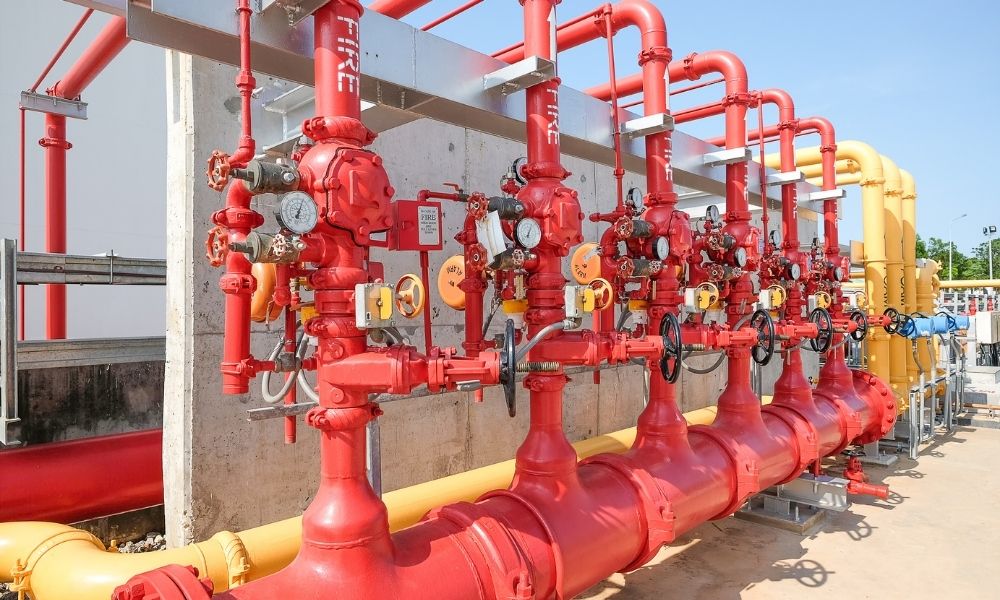
Smart Fire Protection Technologies
The use of smart fire protection technologies has revolutionized the way fires are detected and extinguished. These technologies use advanced sensors and algorithms to detect fires in their early stages, providing an early warning system that can help prevent fires from spreading.
One such technology is the smart smoke detector, which uses advanced sensors to detect smoke and other combustible gases. These detectors can be connected to a central monitoring system that can alert authorities in the event of a fire.
Another example is the use of smart sprinkler systems, which use sensors to detect fires and automatically activate sprinklers to extinguish them. These systems can also be connected to a central monitoring system, allowing authorities to respond quickly in the event of a fire.
Advancements in Fire-Resistant Materials
Advancements in fire-resistant materials have also played a significant role in improving fire protection. These materials are designed to resist fire and prevent it from spreading, providing valuable time for occupants to evacuate and for authorities to respond.
One such material is fire-resistant glass, which is designed to withstand high temperatures and prevent flames from spreading. This material is commonly used in commercial buildings and can provide valuable time for occupants to evacuate.
Another example is fire-resistant insulation, which is designed to prevent flames from spreading through walls and ceilings. This material can help prevent fires from spreading and can provide valuable time for authorities to respond.
Overall, these innovations in fire protection have significantly improved the safety of buildings and their occupants. With continued research and development, we can expect to see even more advancements in the future.
Benefits of Central Fire Protection Systems
Central fire protection systems offer numerous benefits for buildings and facilities, enhancing safety, minimizing property damage, and protecting lives. Here are some key advantages:
Early Detection
Central fire protection systems include advanced detection technologies such as smoke detectors, heat detectors, and flame detectors. Early detection allows for rapid response to fires, helping to contain them before they escalate into larger, more dangerous incidents.
Rapid Alarm Notification
When a fire is detected, central fire alarm systems immediately trigger audible and visual alarms, alerting occupants and emergency responders to the presence of a fire. This rapid notification enables swift evacuation and emergency response, reducing the risk of injuries and fatalities.
Effective Suppression
Automatic sprinkler systems, a common component of central fire protection systems, are highly effective in suppressing fires. By rapidly deploying water or other suppression agents, sprinkler systems can control or extinguish fires, minimizing property damage and preventing the spread of fire to adjacent areas.
Comprehensive Coverage
Central fire protection systems provide comprehensive coverage throughout the building or facility. Detection devices, alarm systems, and suppression equipment are strategically installed in key areas to ensure timely response to fires, regardless of their location.
Minimized Property Damage
By detecting fires early and suppressing them quickly, central fire protection systems help minimize property damage. This can result in significant cost savings for building owners and insurance providers by reducing the extent of fire-related losses.
Enhanced Life Safety
The primary goal of central fire protection systems is to protect lives. By providing early detection, rapid alarm notification, and effective suppression, these systems help ensure the safe evacuation of occupants during fire emergencies, reducing the risk of injuries and fatalities.
Regulatory Compliance
Many building codes and regulations require the installation of central fire protection systems in commercial, industrial, and residential buildings. Implementing these systems ensures compliance with legal requirements and helps mitigate liability risks for building owners and operators.
Reduced Insurance Costs
Buildings equipped with central fire protection systems may qualify for lower insurance premiums due to reduced fire risk. Insurance providers often offer discounts for properties with robust fire safety measures in place, including advanced detection and suppression systems.
Peace of Mind
Central fire protection systems provide building occupants and stakeholders with peace of mind, knowing that comprehensive fire safety measures are in place to protect their well-being and property. This confidence fosters a sense of security and promotes a positive environment within the building.
Remote Monitoring and Management
Many central fire protection systems can be remotely monitored and managed, allowing building owners and facility managers to oversee system performance, receive alerts, and initiate emergency response actions from anywhere with an internet connection.
Overall, central fire protection systems play a critical role in safeguarding buildings and occupants against the devastating effects of fires, offering numerous benefits in terms of safety, property protection, regulatory compliance, and peace of mind.
H3: FAQ About Central Fire Protection Systems
What is the Purpose of Central Fire Protection Systems?
Central fire protection systems are designed to detect, contain, and extinguish fires, minimizing damage and protecting lives and property.
How Do Central Fire Protection Systems Detect Fires?
These systems utilize various sensors, including smoke detectors, heat detectors, and flame detectors, to identify fire hazards.
Are Central Fire Protection Systems Suitable for All Types of Buildings?
Yes, central fire protection systems can be customized to suit the specific needs and requirements of various types of buildings, including residential, commercial, and industrial structures.
Do Central Fire Protection Systems Require Regular Maintenance?
Yes, regular maintenance is crucial for ensuring the continued functionality and effectiveness of central fire protection systems. Scheduled inspections and maintenance activities should be conducted by qualified professionals.
What Are the Regulatory Requirements for Central Fire Protection Systems?
Regulatory requirements for central fire protection systems vary depending on jurisdiction and building codes. It’s essential to consult local authorities and adhere to relevant standards.
Can Central Fire Protection Systems Be Retrofitted into Existing Buildings?
Yes, central fire protection systems can be retrofitted into existing buildings, although the process may require modifications and careful planning to ensure compliance and effectiveness.
How Often Should Central Fire Protection Systems Be Inspected?
Inspection frequency depends on factors such as system type, occupancy, and regulatory requirements. Typically, inspections should be conducted annually by qualified professionals.
What Are Some Common Challenges Associated with Central Fire Protection Systems?
Common challenges include false alarms, system malfunctions, and maintenance issues. Proper design, installation, and maintenance can help mitigate these challenges.
How Can I Ensure the Effectiveness of My Central Fire Protection System?
Ensuring the effectiveness of a central fire protection system involves regular testing, maintenance, staff training, and compliance with regulatory standards.
Who Can I Contact for Assistance with Central Fire Protection Systems?
For expert advice and assistance with central fire protection systems, you can contact certified fire protection professionals or specialized companies that offer installation, maintenance, and inspection services.
Conclusion
Understanding the essentials of central fire protection systems is crucial for ensuring effective fire prevention and mitigation. By leveraging advanced detection, suppression, and alarm mechanisms, coupled with regular maintenance and compliance with regulations, buildings can enhance their resilience against fire hazards.

I’m Abdus Sobur, a highly skilled and professional Fire Safety Officer with a passion for safeguarding lives and property. Over the course of my career, I’ve conducted numerous successful fire safety audits, earning a reputation for excellence in ensuring public safety.
In addition to my role as a Fire Safety Officer, I’m also dedicated to raising awareness about the importance of fire safety. Through my blog, I share insights into the functions of different fire safety equipment, aiming to empower individuals with the knowledge they need to protect themselves and their communities.
I’m driven by a deep commitment to promoting fire safety awareness and preventing fire-related incidents.
